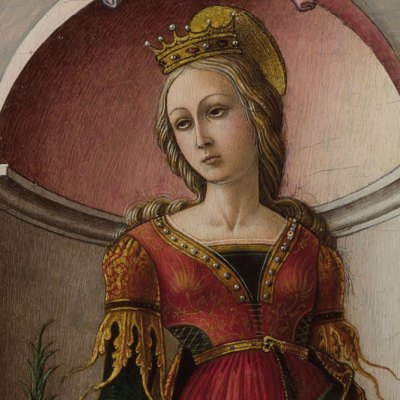For many years, a man sold hotdogs from a trolley outside the British Museum. I can’t recall whether he was still there last time I visited; but to my mind’s eye – or rather, its nose – to pass through the gates on Great Russell Street will always mean scurrying through the smell of sliced onions caramelising on a plancha grill. Perhaps the museum and its catering partner, Benugo, took inspiration from this sausage peddler when they installed a food truck to flog frankfurters in the forecourt in 2013. To step out from the Met on to Fifth Avenue, meanwhile, is to confront a squadron of fast-food kiosks; in the basement cafeteria of the Philadelphia Museum of Art, visitors can dispatch pizza, burgers, fries.
Museums, particularly those with high footfall, are sometimes more intimate with junk food than they might like to admit. Nevertheless, I was initially disconcerted when, in late July, a super-sized sculpture of the stuff appeared in the north-western corner of Trafalgar Square, in front of the National Gallery and not far from the entrance to its Sainsbury Wing: a vast dollop of whipped cream, or perhaps soft-serve ice cream, fashioned from steel and polystyrene and capped with a cherry so glossy that it looks as though it’s been coated in nail varnish. Cherry stalk inclusive, the installation rises more than nine metres from its plinth. It seems to be on the verge of melting down it, too, cream flopping over the fringe of the podium like a prodigious roll of fat.
This dairy mountain is THE END, a work by Heather Phillipson that is the 13th piece to have been commissioned for temporary display on the Fourth Plinth in Trafalgar Square since its contemporary art programme began in 1998. It is perhaps the most intrusive sculpture to date, not only thanks to its preposterous size but because of the scaled-up drone on its surface, which spies on onlookers and passers-by, transmitting a live-stream of the square to a publicly accessible website. A second parasite, a huge fly that might have migrated from a painting by Crivelli in the nearby gallery, also feeds on its pastures pasteurised. As I gaze up at THE END on a sticky night in early August, I spot actual flies, too, dallying near the surface.
A plaque on the plinth explains that ‘[THE END] responds to Trafalgar Square as a site of mass gathering, protest, broadcast, exuberance and unease.’ That may well be the symbolic intention. But for me THE END is most striking as a literal, admonitory form – a monument to the scale of our overindulgence, to the cartoonish temptations of sugar and processed foods, and a memento mori of how they are expanding our waistlines. In the week that the sculpture was unveiled, the UK government announced it would prohibit the advertising of junk food before the broadcasting watershed.
If there is a derivative aspect to THE END, then that seems appropriate to its appearance. It takes the synthetic imagery of the billboard and inflates it into a grotesque three-dimensionality, rehearsing how easily allure gives way to disgust. And it brings to mind the fixation of so many Pop artists on fast food, on its branding and packaging, on its ubiquity, its dietary demagoguery. Here’s Andy Warhol, writing in 1975: ‘All the Cokes are the same and all the Cokes are good. Liz Taylor knows it, the President knows it, the bum knows it, and you know it.’
Repetition is part of the logic of junk food, of course, in that what promises to be a treat easily becomes a habit. The most conspicuous allusion here, I think, is to Claes Oldenburg and Coosje van Bruggen’s Dropped Cone (2001), a colossal, capsized vanilla ice cream attached to the roof of a shopping mall in Cologne. Back in the 1980s, outside the Walker Art Center in Minneapolis, Oldenburg and Van Bruggen installed their own gigantic cherry on a spoon, too, which starts to resemble a Brobdingnagian spoonful of ice-cream sundae when the snow comes. We continue to be overwhelmed by our fondness for what makes us fatter, THE END seems to say, dwarfing us with a representation of what can only ruin us.
From the September 2020 issue of Apollo. Preview and subscribe here.


